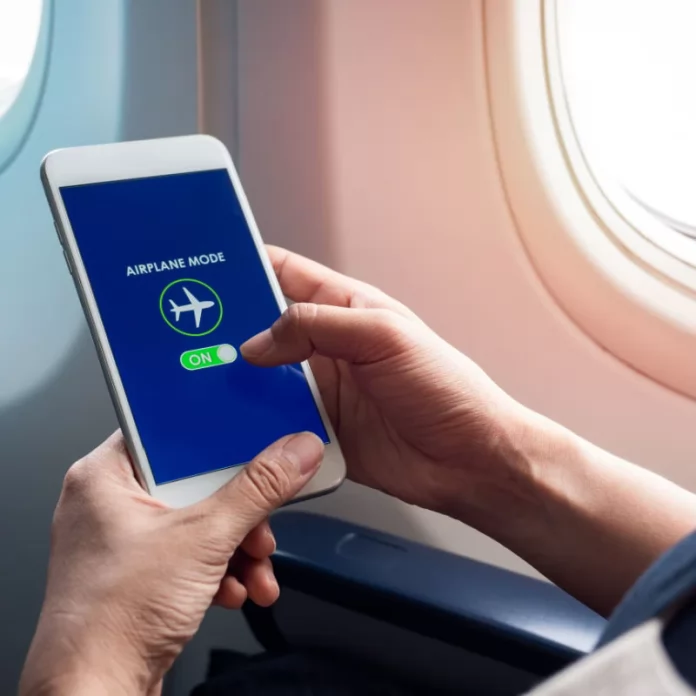Airlines within the European Union have just been given permission to equip planes with 5G technology. The news comes as part of the European Commission’s Digital Future Strategy and will affect all EU member states. Once implemented, passengers will be able to use their phones to their full capacity on flights, meaning they can make calls, send texts, and even download content from high in the sky.

It’s Time to Say Goodbye To Airplane Mode
Currently, airlines inform passengers to switch their phones to airplane mode prior to take-off. With these new changes, that will no longer be necessary. Airplane mode is used to disable the data connection on mobile phones, which limits their functional capacity.
Some airlines offer wi-fi service onboard, typically for a fee, but if that connectivity is unavailable, passengers can only use programs and services that have been downloaded or are available offline. Also, many onboard wi-fi connections have rules against VOIP or apps like FaceTime. With 5G on board, this will not be an issue.
The use of 5G and mobile data has not been allowed on flights largely because of a lack of knowledge of how its use could affect planes. There were major fears that data frequency from phones could interact with flight control systems and cause safety issues. Concerns include the potential for inaccurate altitude measurements by the aircraft’s automatic control systems. The use of airplane mode eliminated the chance of this occurring.

But safety authorities have now determined that the risk of interference is minuscule in the EU. This has paved the way for the authorization of 5G mobile data technology to now be included on aircraft. What implications will this have for travelers?

What Does This Mean For Flights?
We can expect a few changes onboard planes once passengers can use their mobile phones to full capacity mid-air. First, the flight crew will no longer need to remind passengers to switch their phones to airplane mode when boarding. Passengers can use the connection to stream content, removing the need to download entertainment prior to the flight. Additionally, anyone wanting to use a computer or tablet can access mobile connectivity via a hotspot connection to their phone.

While those all sound like great benefits, there are surely some downfalls to consider as well. For some, flying is one of the few times when they can really disconnect from their phones. The new ruling removes the forced limitations on phone usage and, with that, the excuse of “I’m flying and will be unavailable.”

Secondly, and arguably the biggest concern, is the change in the atmosphere on planes. Will the person sitting next to you spend the whole flight loudly talking to friends? Will we become too familiar with our fellow passengers’ lives as we hear them participating in work calls and family disputes? A 2019 report from CNN exposed the strong anti-phone sentiment among flight attendants, citing that it will inevitably lead to more arguments between passengers.
When Will Mobile Data Be Available, And Will It Work For All Phones?
The European Commission has set a June 30, 2023 deadline for countries to make 5G frequency bands available for planes. It is unclear if all flights will be required to make use of this technology or if the decision will be up to individual airlines. Phones that work on 4G or older connections will also have access to their mobile networks on flights.

Will This Be Available On U.S. Flights?
The new ruling applies only to flights within the European Union. Although the technology for its use already exists elsewhere, there have been no announcements that it will be made available in the U.S. One reason could be the pushback from the Association of Flight Attendants. Another could be more technical. The U.S. and the EU have different frequencies and power settings for 5G. The differences mean that the EU has less risk that usage will interfere with flights.
























